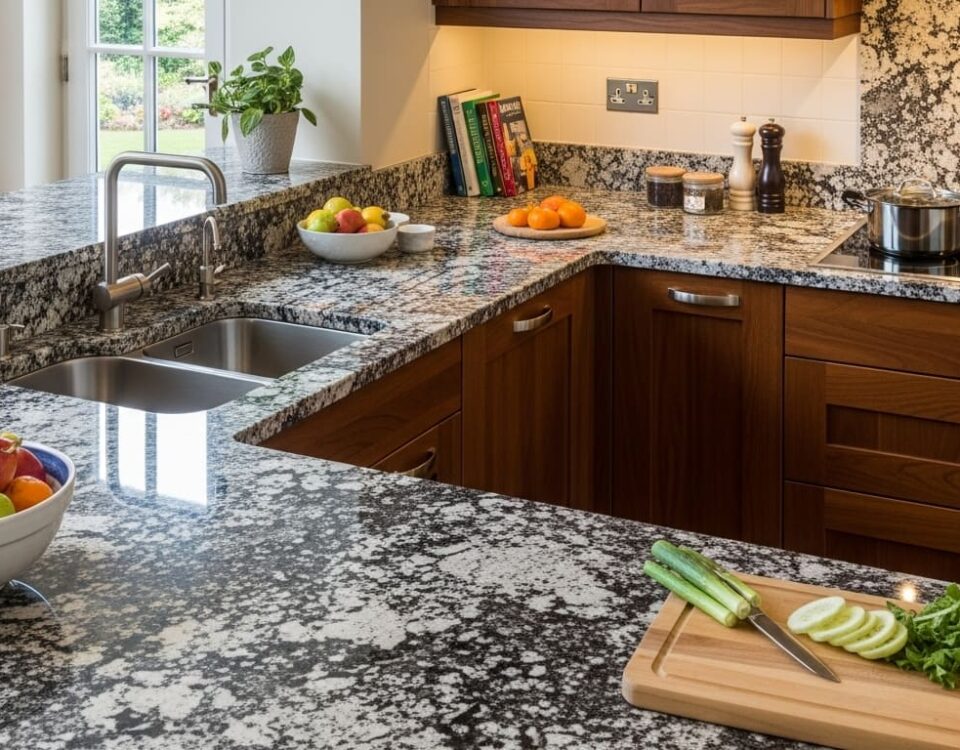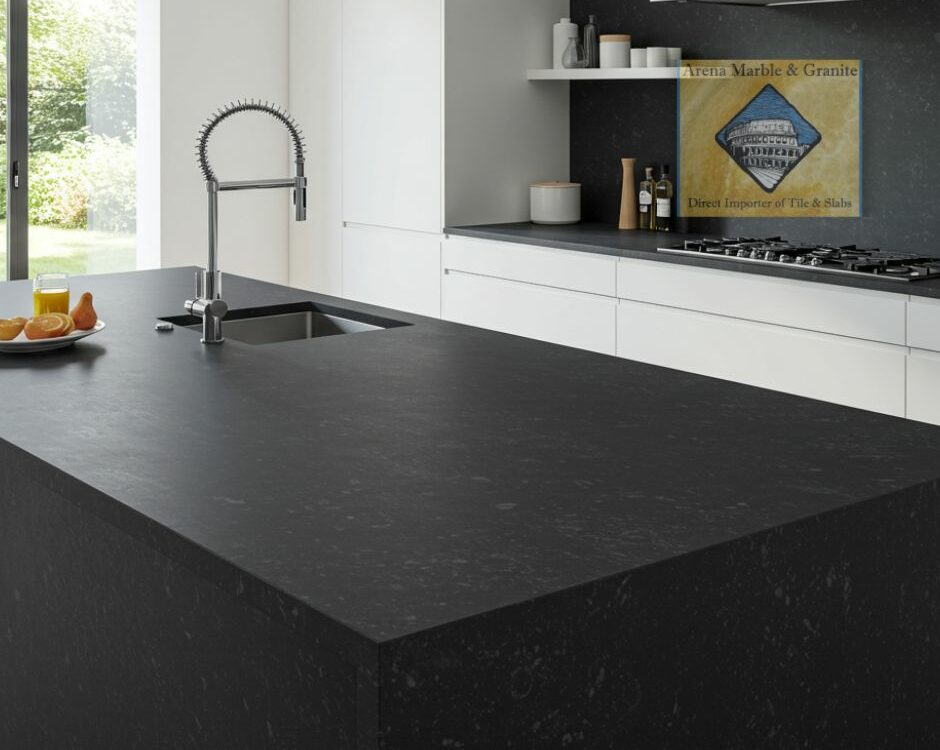The Strength and Resilience of Quartz Kitchen Countertops
December 16, 2024
Discover the Beauty of Quartzite Kitchen Countertops: A Complete Overview of the Material
January 6, 2025Why Granite Kitchen Countertops Remain a Top Choice for Durability
Granite kitchen countertops persist as a favored option for durability, primarily due to their inherent geological composition. Formed from the slow crystallization of magma beneath the Earth’s surface, granite comprises interlocking mineral grains of quartz, feldspar, and mica, which confer exceptional compressive strength and abrasion resistance. The Mohs scale rates granite’s hardness at 6-7, underscoring its capacity to withstand significant wear and tear. Furthermore, its low porosity mitigates moisture infiltration, thereby enhancing its structural longevity. What factors, however, contribute to granite’s ability to maintain aesthetic appeal over time without succumbing to surface degradation?
Natural Strength and Resilience
Granite’s inherent strength and resilience make it a top choice for kitchen countertops, offering both durability and aesthetic appeal.
Composed primarily of quartz, feldspar, and mica, granite exhibits high compressive strength and resistance to abrasion, crucial for withstanding the daily rigors of kitchen activities. Its Mohs hardness rating of 6-7 signifies its ability to resist scratches and maintain surface integrity.
Industry professionals recognize granite’s capacity to endure thermal stress, a key attribute when exposed to hot pots and pans. Furthermore, its low porosity minimizes moisture infiltration, reducing the risk of bacterial growth and staining.
These characteristics not only enhance its functional longevity but also align with the desires of those seeking a reliable, community-endorsed material in their living spaces.
Long-lasting Beauty and Appeal
Renowned for its timeless elegance, granite offers an unmatched aesthetic appeal that complements a variety of kitchen designs. Its crystalline structure, formed under significant geological pressure, yields a diverse palette of natural colors and patterns, allowing for unique customization. Granite’s inherent beauty lies in its mineral composition, typically comprising quartz, feldspar, and mica, which collectively impart a lustrous finish and depth.
From an industry perspective, the appeal of granite is not solely aesthetic; its market presence is bolstered by its enduring popularity among homeowners and designers. The stone’s ability to remain visually appealing over decades, resisting fading and surface wear, enhances its value proposition. This persistent allure fosters a sense of community among enthusiasts who appreciate the blend of form, function, and heritage.
Read More:




